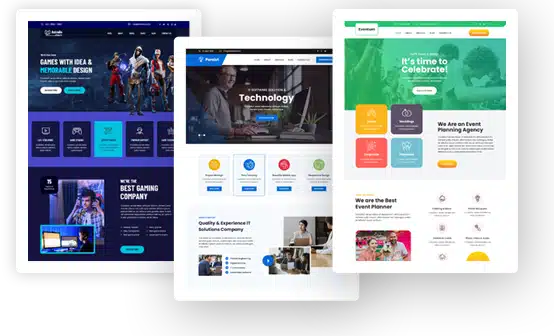AI Translation for WordPress: How to Create a Multilingual Website That Actually Works

Struggling to make your WordPress site multilingual—without wrecking your design, speed, or SEO? You’re not alone.
As your business scales globally, your website needs to speak your customer’s language—literally. But turning your WordPress site into a multilingual powerhouse isn’t as simple as installing a plugin and hitting “Translate.” Poor translations, slow load times, and design misfires can all sabotage your global user experience. For some businesses, the answer lies in exploring multilingual outsourcing services that combine human expertise with AI efficiency to streamline the entire process.
The good news? With the right combination of multilingual-ready themes, best practices, and advanced AI translation tools, you can build a multilingual site that performs just as well as it looks—and sounds.
Let’s walk through how to do that, step-by-step.
Why Multilingual Content Is No Longer Optional
If you’re only speaking one language online, you’re already missing out. Over 70% of consumers prefer to buy in their native language, and nearly half won’t buy at all if a website isn’t available in their preferred language.
Adding more languages to your site doesn’t just build goodwill—it boosts performance metrics across the board:
- Increased global SEO visibility
- Reduced bounce rates
- Higher conversion rates
- Better customer trust
In other words: translation isn’t just a nice-to-have—it’s a revenue driver.
The Common Pitfalls of Multilingual WordPress Sites
Going multilingual on WordPress can be trickier than expected. Many businesses hit the same roadblocks:
Translation Quality Issues
Generic machine translations can sound robotic or inaccurate, especially with domain-specific terminology. This erodes trust and confuses your message.
Design Breakage
Longer words in other languages (like German or Finnish) can break your layout, while RTL (right-to-left) languages like Arabic require design adaptations.
Performance Drops
Some plugins bloat your site by loading every language version simultaneously, hurting your load times and SEO rankings.
SEO Misconfigurations
Improper hreflang tags, duplicate content, or poorly localized metadata can keep your translated pages from ranking.
The Smarter Strategy: AI Translation + Smart WordPress Architecture
The winning formula isn’t just AI translation alone—it’s the synergy between powerful translation tools, optimized themes, and a thoughtful implementation strategy. Here’s what that looks like:
- Use AI-powered translation tools for speed and scalability
- Select a theme that’s fully multilingual-compatible
- Optimize SEO, performance, and design for each language
- Add a human touch for polish where needed
Let’s explore how each part works.
Step 1: Use a High-Quality AI Translation Tool
Machine translation has come a long way. Today’s best AI translators use neural networks and large language models (LLMs) to generate fluent, context-aware translations.
Why MachineTranslation.com Stands Out
MachineTranslation.com is the world’s most accurate AI translator tool, trusted by global professionals. Here’s why it’s ideal for WordPress users:
- Multi-engine comparison:
See translations from Google, DeepL, Microsoft, and more—side by side. - AI Translation Agent with memory:
Refine tone, terminology, and style with smart Q&A prompts. It even remembers your preferences if you’re registered. - Key Term Translations:
Identify up to 10 domain-specific terms and compare their best translation options in a side-by-side table. - Quality scores and detailed analysis:
See which engine performs best for your specific content and language pair. - Over 270 languages are supported, including newly added languages like Fulfulde, Hunsrik, and Tetum.
Pro tip: Use AI for high-volume content like blog posts, but apply human editing for CTAs, legal disclaimers, and core branding pages.
Step 2: Choose a Multilingual-Ready WordPress Theme
Not all WordPress themes are created equal when it comes to multilingual support. Here’s what to look for:
Features to Prioritize
- Translation-ready with .po/.mo file support
- Compatibility with plugins like WPML, TranslatePress, or Polylang
- RTL (Right-to-Left) support
- Lightweight and SEO-optimized
Step 3: Make Translations Design-Safe
What looks great in English might break in other languages. Translation often changes word length, grammar structure, and formatting.
Best Practices:
- Use flexible containers (%, em, rem units instead of px)
- Test your layout in multiple languages and screen sizes
- Customize spacing and padding per language if needed
- Preview translations using a segmented bilingual view
Step 4: Keep Performance Lightning-Fast
A slow, multilingual site is a deal-breaker. Here’s how to ensure performance doesn’t suffer:
- Use language subdirectories (/fr/, /de/) instead of dynamic translations
- Install a caching plugin like WP Rocket
- Use a CDN like Cloudflare
- Lazy-load images and defer non-critical scripts
- Only load the current language version—not all of them at once
Step 5: Multilingual SEO Setup
Translating your content is just the start—you also need Google to understand it.
Your SEO Checklist:
- Language-specific URLs (e.g., /es/, /de/)
- Proper hreflang tags
- Translated meta titles and descriptions
- Submit each language sitemap in Google Search Console
- Use SEO-friendly translation plugins like WPML or TranslatePress
AI translation tool helps here too—with translation quality scores and tone analysis, you can fine-tune SEO-friendly content from the start.
Step 6: Refine Key Content with Human Editing
Even the best AI translation engines can’t always capture brand tone, cultural nuance, or legal accuracy. That’s where Human Certification comes in.
When to Use Human Editors:
- Landing pages and CTAs
- Legal disclaimers or medical info
- Brand slogans or product copy
MachineTranslation.com offers Human Certification for these high-impact needs—handled by professional linguists at competitive rates.
Step 7: Add Smarter Features to Customize the Output
What if your translation tool could adapt over time to your brand’s voice?
With it’s smart AI Translation Agent, it does exactly that:
- Learns from your past translation edits
- Remembers your preferred tone and terminology
- Adapts future translations automatically
- Saves you time and improves consistency
It’s a game-changer for businesses managing multiple sites or languages.
Real-World Example: A Travel Blog Goes Multilingual—Without Losing Speed or UX
One global travel site struggled to serve readers in Arabic and German. By using:
- The Astra theme
- TranslatePress plugin
- Translations powered by MachineTranslation.com, with manual edits for top pages
They reduced bounce rates by 28%, improved site load time, and saw a 3x growth in international traffic within six months.
Conclusion: Build a Multilingual Site That Works as Hard as You Do
Going multilingual doesn’t have to mean bloated plugins, broken pages, or mediocre translations. With smart tools and the right setup, your WordPress site can speak fluently to the world—without losing its voice.
Final Checklist:
- Choose a reliable AI translation tool like MachineTranslation.com
- Select a multilingual-friendly theme
- Use compatible plugins like WPML or TranslatePress
- Optimize for design, performance, and multilingual SEO
- Add Human Certification for mission-critical content
- Leverage AI personalization and memory for consistent branding

